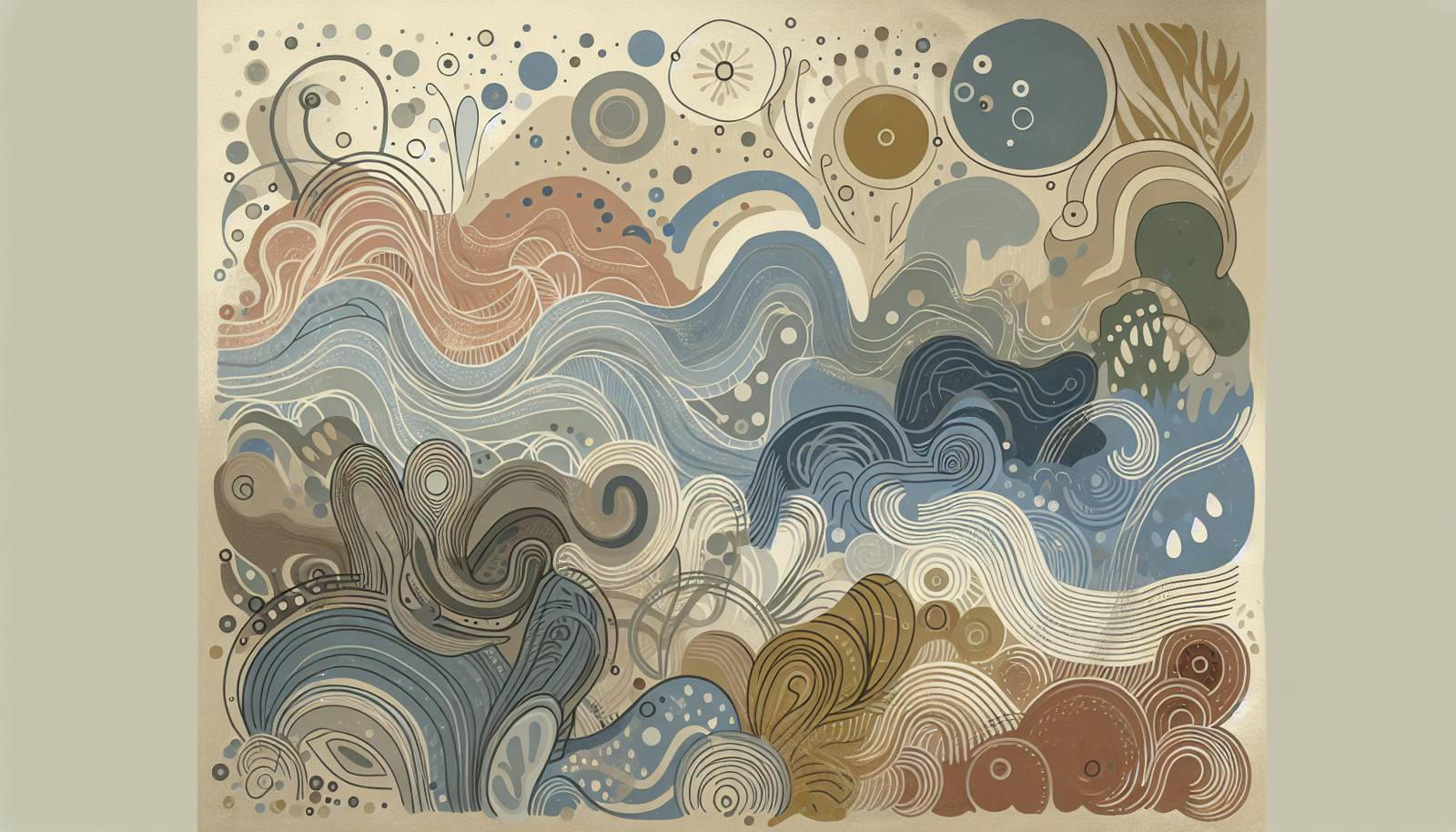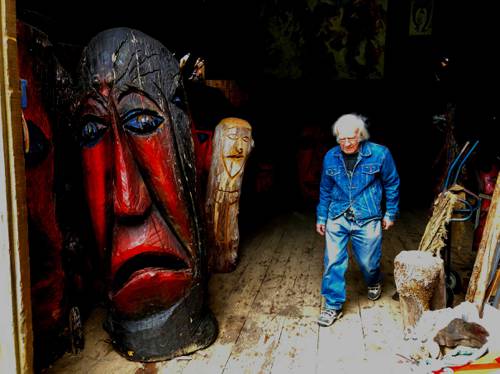
FAQ About The Impact of Art Brut on Outsider Art

What is Art Brut?
Art Brut, which translates to "raw art" or "rough art," is a term coined by French artist Jean Dubuffet in the 1940s. It refers to artworks created outside the boundaries of official culture, primarily by self-taught artists who do not conform to conventional artistic standards. Dubuffet was particularly interested in the works of psychiatric patients, prisoners, and children, viewing their creations as untainted expressions of pure creativity.

What distinguishes Art Brut from Outsider Art?
While the terms Art Brut and Outsider Art are often used interchangeably, they have distinct differences. Art Brut specifically refers to works collected and defined by Jean Dubuffet, emphasizing the raw, unfiltered creativity of the artists. Outsider Art is a broader term that includes any art created by self-taught or "naïve" artists who operate outside the established art world. Outsider Art encompasses Art Brut but also includes a wider range of creators and artworks.

How did Jean Dubuffet influence the Outsider Art movement?
Jean Dubuffet was instrumental in bringing attention to Outsider Art by collecting and promoting works he classified as Art Brut. His advocacy highlighted the unique value of art created without formal training or influence from the mainstream art world, challenging traditional perceptions. Dubuffet's efforts laid the groundwork for the recognition and appreciation of Outsider Art, expanding its reach and acceptance within contemporary art scenes.

What are the characteristics of Art Brut?
Art Brut is characterized by its rawness and lack of influence from traditional art techniques or cultural trends. Works of Art Brut often exhibit intense imagination, spontaneity, and a personal narrative style. The artists frequently employ unconventional materials and methods, creating pieces that can be both compelling and unsettling. It's the honest, uncensored nature of Art Brut that defines its uniqueness.

How does Art Brut influence contemporary art scenes?
Art Brut has significantly influenced contemporary art by challenging conventional definitions of what constitutes great art. It has opened the art world to a more diverse range of creators and styles, encouraging contemporary artists to explore authenticity, personal expression, and non-traditional materials. Many contemporary artists draw inspiration from the unfiltered creativity found in Art Brut, integrating its principles into their work to push the boundaries of modern art.

What are some notable examples of Art Brut artists?
Notable Art Brut artists include Adolf Wölfli, a psychiatric patient whose intricate and imaginative works were collected by Jean Dubuffet, and Augustin Lesage, an untrained French miner who claimed to be guided by voices to create large, symmetrical paintings. Other prominent figures include Henry Darger, an American writer and artist known for his detailed and fantastical illustrations, and Aloïse Corbaz, whose vibrant drawings were also admired by Dubuffet.

Can Outsider Art and Art Brut be found in mainstream art museums?
Yes, Outsider Art and Art Brut have gained recognition in mainstream art museums around the world. Many institutions now have dedicated exhibitions or permanent collections featuring these works. For example, the Collection de l'Art Brut in Lausanne, Switzerland, is a museum devoted entirely to Art Brut, while other major museums, like the Museum of Modern Art in New York and the American Folk Art Museum, also include Outsider Art in their collections.

What role did the Collection de l'Art Brut play in popularizing Art Brut?
The Collection de l'Art Brut in Lausanne, Switzerland, established by Jean Dubuffet in 1976, played a crucial role in popularizing Art Brut. It provided a formal venue for showcasing these works, offering insight into the diverse, unorthodox styles that characterize Art Brut. By curating and presenting these works, the collection helped legitimize the art form and broaden public appreciation and understanding of this unique artistic expression.

Is Outsider Art the same as Folk Art?
Outsider Art and Folk Art are related but distinct categories. Folk Art typically refers to traditional cultural art, created within a community or ethnic group, often passed down through generations. Outsider Art, on the other hand, is created by individuals who operate outside the mainstream art world, usually self-taught, and not necessarily bound to cultural traditions. While there can be overlaps, particularly with naive or primitive styles, they each represent different approaches to art-making.

How do Art Brut and Outsider Art challenge traditional art norms?
Art Brut and Outsider Art challenge traditional art norms by redefining what is considered "valuable" or "legitimate" art. These movements prioritize raw, unfiltered creativity and personal expression over technical skill and academic training. By doing so, they question institutional hierarchies and broaden the scope of artistic possibilities, advocating for a more inclusive understanding of art that appreciates diverse perspectives and experiences.

What materials are commonly used in Art Brut?
Artists working in the Art Brut style often use unconventional materials, reflecting the raw and expressive nature of their work. Common materials include found objects, scrap materials, and everyday items not typically associated with art-making, such as newspapers, cardboard, wire, and fabric. The choice of material is typically driven by necessity or intuition, rather than traditional artistic criteria, emphasizing the non-conformist approach of Art Brut creators.

Can anyone become an Art Brut artist?
In theory, anyone can become an Art Brut artist, as it primarily involves creating art outside of the influence of formal artistic training and cultural norms. The key is tapping into a raw, intrinsic form of expression, often not concerned with conventional aesthetics or techniques. However, recognition as an Art Brut artist often depends on external validation from collectors, galleries, or dedicated institutions that appreciate and promote this type of art.

How does Art Brut contribute to our understanding of mental health?
Art Brut provides valuable insights into the mental health experiences of its creators, many of whom have lived in psychiatric institutions or have similar backgrounds. Their works offer an uncensored, intimate glimpse into their mental landscapes, often illustrating their thoughts, fears, and imaginations. This perspective enriches discussions about mental health by showcasing how creativity can serve as a powerful tool for understanding and expression, advocating for greater empathy and awareness.

Are there modern equivalents to Jean Dubuffet's work in promoting art outside mainstream culture?
Today, many curators, collectors, and artists continue to champion the spirit of Jean Dubuffet by promoting art created outside mainstream culture. This includes exhibitions dedicated to self-taught artists, annual outsider art fairs, and publications that focus on unconventional art forms. The global growth of outsider art networks and increased academic interest in marginalized art forms indicate Dubuffet's influence persists, fostering ongoing appreciation for art that challenges traditional norms.

Has the perception of Outsider Art changed over time?
The perception of Outsider Art has evolved significantly over time. Initially viewed as "primitive" or "naïve," it has gradually gained recognition and respect within the art world. Today, Outsider Art is celebrated for its authenticity, innovation, and ability to break conventional boundaries. The growing number of exhibitions, collections, and art fairs dedicated to Outsider Art reflects this shift, highlighting its significance in contemporary artistic discourse.

What impact did Art Brut have on modern art education?
Art Brut has impacted modern art education by challenging the exclusivity of traditional academic training, encouraging institutions to embrace a wider range of artistic expressions and influences. Educational programs are increasingly incorporating studies of Outsider Art and Art Brut to broaden students' understanding of creativity, emphasizing the value of personal expression and diverse artistic practices. This shift underscores the importance of inclusivity and responsiveness to non-traditional art forms.

How has technology affected the promotion and accessibility of Outsider Art?
Technology has significantly enhanced the promotion and accessibility of Outsider Art by allowing artists to share their work with a wider audience through digital platforms and social media. Online galleries and virtual exhibitions have made Outsider Art more accessible to enthusiasts and collectors around the world, increasing its visibility and appreciation. Additionally, digital tools have provided new mediums for creation, further expanding the boundaries of Outsider Art.

What are some challenges faced by Art Brut artists today?
Art Brut artists today face several challenges, including maintaining authenticity while engaging with the broader art market, which can sometimes pressure artists to conform to commercial or aesthetic expectations. Another challenge is gaining recognition and space alongside more conventional art forms in galleries and museums. Additionally, as institutions and collectors become more aware of the value of Art Brut, there's a risk of exploitation or misinterpretation of the artists' intentions and works.

Why is Art Brut considered important in the history of art?
Art Brut is considered important in the history of art because it revolutionized the understanding of creativity, emphasizing the importance of raw, personal expression over formal training and traditional aesthetics. It challenged hierarchical structures within the art world, advocating for the recognition and appreciation of marginalized and self-taught artists. This movement has broadened the scope of what is considered valuable art, influencing how contemporary art is perceived and created today.

Can technology create new forms of Art Brut?
While Art Brut traditionally involves the use of raw and unconventional materials, technology can indeed create new forms of Art Brut by enabling creators to experiment with digital tools that lie outside traditional art practices. Digital art created without formal training and with a focus on personal expression can be seen as an evolution of the Art Brut ethos. However, the challenge remains to maintain the raw authenticity that defines Art Brut in this new medium.
